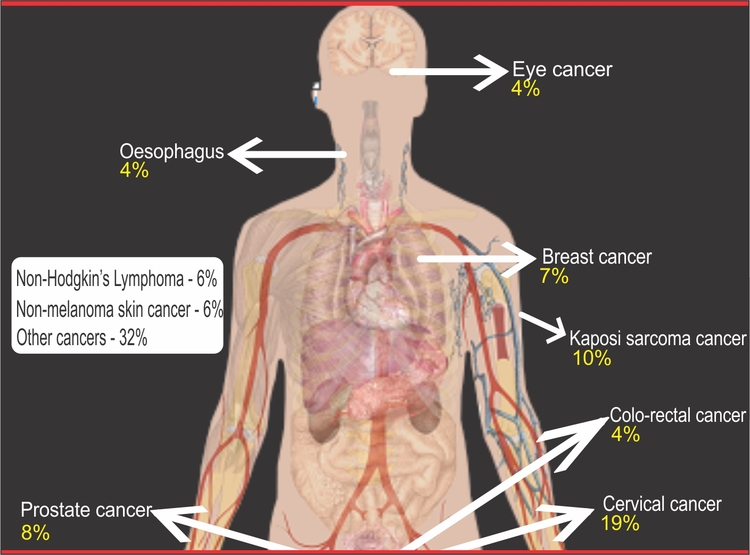
The Sunday Mail


The graph shows the number of cancer cases recorded in Zimbabwe between 2005 and 2012, and the diagram depicts the prominent cancers among Zimbabweans
Shamiso Yikoniko and Andrew Moyo
The National Aids Council has expanded its scope to include cancer prevention and treatment, and will from now on procure detection equipment and drugs.
US$250 000 worth of machinery and medicine have already been purchased and will be distributed via the National Pharmarceutical Company (NatPharm).
Priority under the initiative will be people living with both HIV and cancer; though those with cancer alone will also benefit.
In terms of the National Aids Council of Zimbabwe Act, NAC should facilitate HIV and Aids combating strategies and control the effects of this epidemic.
Indications of correlation between HIV and some cancers prompted NAC to take the latest route.
Studies have shown that a number of people with HIV are susceptible to cancer-causing infections as their immune systems are generally weak.
Prominent are Kaposi’s sarcoma, non-Hodgkin’s lymphoma and cervical and eye cancers.
NAC monitoring and evaluation director Mr Amon Mpofu told The Sunday Mail: “The cancer detection equipment and drugs will be distributed as it is meant to benefit everyone, even those who are not living with HIV.

The graph shows the number of cancer cases recorded in Zimbabwe between 2005 and 2012, and the diagram depicts the prominent cancers among Zimbabweans
“We really cannot focus on HIV and Aids alone without addressing related diseases such as cancer. If we address cancers, we will have addressed HIV.
“What is also important is that measures are in place to ensure this latest initiative does not strain resources earmarked for anti-retroviral drug purchases.”
Over 850 000 Zimbabweans are on Government’s anti-retroviral Treatment programme and will be among the first to benefit.
Researchers say people with HIV and Aids are at least 70 times more likely to be diagnosed with non-Hodgkin lymphoma and five times more prone to cervical cancer.
Though not all cancer cases are related to HIV, Zimbabwe has over the years witnessed an upsurge in the incidence of the non-communicable disease.
Experts believe one in four cancers may be linked to diet, and some bowel cancers have been traced to red and processed meat products.
The Zimbabwe National Cancer Registry Annual Report (2012) shows that 6 107 new cases were recorded countrywide in that year, with women accounting for 3 486.
The most frequent were cervix uteri, Kaposi’s sarcoma, prostate, breast, non-Hodgkin’s lymphoma, non-melanoma skin, oesophagus, eye, and colo-rectal cancers.
Prostate cancer was the most common among black men while most women of the same race had cervical, breast, eye, oesophagus, stomach, non-melanoma skin, ovary and liver cancers as well as Kaposi’s sarcoma and non-Hodgkin’s lymphoma.
Non-melanoma skin cancer was the most frequent among non-black Zimbabwean men, and the leading ones in non-black Zimbabwean women were non-melanoma skin, breast, melanoma skin, colon, cervix uteri, stomach, rectum, pancreas, ovary and lung cancers.
The report also shows that 211 childhood cancers (age 0-14) were registered in 2012 while paediatric cancers represented 3,5 percent of all cases.
A total of 1 556 deaths were recorded in Harare and the leading causes were cervical cancer (11 percent); Kaposi’s sarcoma, oesophagus, and prostate cancer (all nine percent); non-Hodgkin’s lymphoma and primary liver cancer (both eight percent); colo-rectal cancer (five percent); and breast and lung (both four percent). Other cancers accounted for 33 percent.



